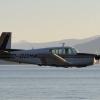Fuel tank dipstick measurements
-
Members Online
- RescueMunchkin
- Speed Merchant
- EricJ
- sheriffburrell
- 76Srat
- Griswold
- hammdo
- Becca
- Hank
- Justin Schmidt
- cemmett
- TangoTango
- Grumpy
- Jpeters00
- Martin S.
- Rick Junkin
- MikeOH
- GMBrown
- Paul Thomas
- DRH4249
- IvanP
- mooneyflyfast
- mooniac58
- Kelpro999
- Guillaume
- haymak3r
- richardbrochu27
- Ragsf15e
- FLYFST
- finnicky7
- Wooly
- OR75
- Jblanton
- varlajo
- Ascend MX
- Andy95W


Recommended Posts
Join the conversation
You can post now and register later. If you have an account, sign in now to post with your account.